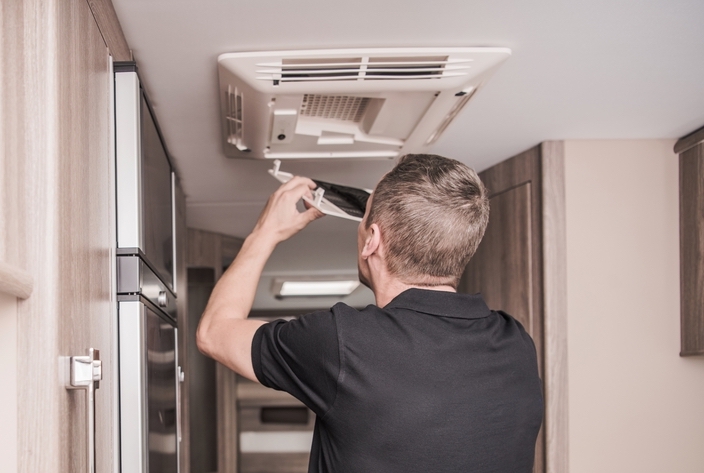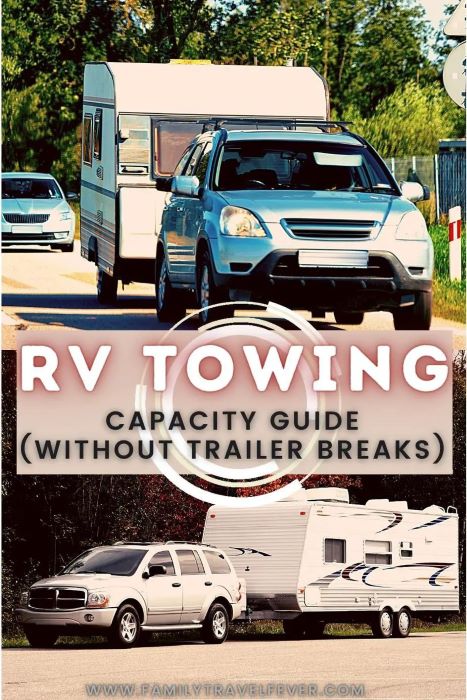How to Replace an RV Door
NOTE*** The content on this page may contain affiliate links, we may make a commission. And, as an Amazon Associate, we earn from qualifying purchases. More information: disclosure page.
Your RV door is a feature that you probably take for granted until you experience a problem with it. A little wear and tear may seem harmless. But in the long run, it will severely damage your RV door and invite leaks, moisture, and even insects to get in. After working on my RV myself, I have replaced many parts without taking them to the repair shop. I will tell you how to replace the door to your RV and what steps to take to avoid problems.
Replacing your RV door is a straightforward process if you do it correctly.
- Measure the entrance and order the new RV door
- Remove the old door, using putty tape to secure your RV’s door frame to the wall.
- Center and bolt in the new door
- Rremove the excess tape using a plastic scraper.
- Check if the door will swing freely and latch properly.
You may want to replace an RV door yourself and save a lot of money and time by not taking it to the RV repair shop. If you are planning to replace your RV door, then it is essential to note that there are some factors that you first need to consider. That way, you will be able to get the job done without any problems occurring.
You can also check other RV related blogs here:
- Want a Metal Roof for Your RV? Read This Guide!
- Should You Balance and Rotate Your RV Tires?
- How To Set Up an RV For Permanent Location Use
An Introduction to RV Entry Doors

Every RV you will see in the market right now has a minimum of one entry door on it. My travel trailer actually has 2 entry doors (which I love).
Plus RVs have outer doors on the storage areas too. These can be damaged and replacing the storage doors is a similar process to the entry door.
You may be thinking that replacing your RV door is a matter of buying and installing a replacement. However, the truth is that these doors come in different sizes, shapes, and styles. So, suppose you proceed to purchase a replacement without measuring your door frame. You could be making an expensive mistake.
Two of the most popular RV entry door styles are the metal ones with square and rounded corners. But some are entirely enclosed in a glass panel, allowing more light to pass through.
The size of RV entry doors ranges from 24-32 inches wide and are generally 70 inches tall. The doors are made from aluminum and have plexiglass or glass windows and weather stripping. Most have a screen door that fits together with the door.
In general, replacement RV entry doors cost from $300 to $750 and can be purchased from RV shops or Amazon. RV salvage yards will also have used RV doors for sale.
In addition to the RV entry door, RVs also have access doors on the outside. It is worth noting that this door is different from the RV’s front door. The access door gives you a passageway to your trailer’s cargo and storage area. It has to be secure enough to protect the contents of your cargo area while remaining accessible.
Steps in Replacing Your RV Door

Replacing your RV door with a new one will require a few steps and maybe another person to help out. Most RV manufacturers do not have a standard door size. For this reason, finding a replacement door alone can be a difficult job. But if you will find a replacement door that has the same size as your door frame, the replacement process is pretty straightforward.
Find and Purchase a New Door
First measure the current door taking note of the size and shape of the door. Are the top corners straight or rounded? How wide is the door?
Next, go shopping. Check the RV stores or Amazon for the correct size door. Amazon has some doors for example this 68 inch RV door.
(BTW while you are shopping for a new door it’s a good idea to upgrade the lock as well. If you are like me and constantly lose keys, a super-secure keyless lock would be an excellent choice. See the price on Amazon.
Another option is to have a custom-made door.
You can also try contacting an RV salvage yard. They may have an RV with the same size door as yours that you can buy used. eBay or Facebook are good places to look for used doors also.
Prepare your materials
In addition to the door, you will also need some materials to remove the old door and install the new RV door. This way, you can ensure that you have everything you need within your reach once you start replacing your motorhome’s door.
Below are the tools you will need during the door replacement process:
- Nuts, bolts, or metal screws and Ziploc to keep them together
- Power screwdriver
- Socket wrench
- Plastic scraper
- RV Putty or construction tape
- Replacement door with door frame
Honestly, I love the Dewalt power screwdriver for so many projects. The battery is small and the drill is easy to handle but so powerful. This is the one I recommend on Amazon.
Remove the old door
Cut sealant all the way around the outside.
Carefully remove the door that you need to replace by dismantling it from the frame. To do this step, remove all the screws one after the other all the way around the jam. Don’t forget the screws on the inside
Many manufacturers build RV doors as a single unit. For this reason, the removal process may take some time. So plan ahead so you have time to complete the project without stopping.
Have a friend ready to help so that the door does not fall out on the ground! Loosen the door and both you can remove it together.
Apply putty tape
After successfully removing the old RV door, apply putty tape around to the outer edges of your exposed doorway. The putty tape will seal your new door frame in place. It will also serve as a buffer between the RV’s body and the door frame keeping out moisture and bugs.
Install the new RV door into the doorway
Now that your door frame has a seal, the only thing left to do is to install your new RV door. You can use either a power drill or a manual screwdriver during this process.
- You may need a hand from a friend at this point to keep everything aligned up.
- You need to place the new door in the doorway, aligning the holes for the bolts.
- Next, get your plastic scraper and remove the excess tape that was placed for the seal.
Test out the door’s swing and latch
If you did the entire process correctly, your new RV door would swing freely without any friction. The door and secondary screen door will latch easily. However, if you installed a door incorrectly size, you will need to do some troubleshooting to see what went wrong. Hopefully, you will not have to re-do the entire process.
The Things You Need to Know About Replacement RV Doors
Because the doorway is not a solid wall and is only supported by hinges and the latch, this is a weak point and flexes easily. This can be true if you are driving on a bumpy road. As a result, the door’s hinges can become loose. If your door has a glass component, you might suddenly notice that it acquired cracks. If you see such damages, then the only thing left to do is replace your RV door.
Before purchasing a replacement door, the first thing you need to do is to measure the space where you will install it accurately. In addition, it is ideal for listing down all the styles and materials that you think would bring your RV the best benefit. If you cannot find a door that will suit your preferences, you can have one custom-made. A customized door is ideal as you can ensure that it will fit your trailer.
You Can Buy Used RV Doors
RV doors are an expensive investment. RV doors can range from $350 to $700 and much more for a custom motorhome replacement door. Did you know that you can buy a used RV door at a much lower cost?
Just like car junkyards, there are RV salvage yards that sell used parts to RVs. An RV may be damaged but the door is still usable. If you have the measurements for the door you are looking for you might find one by contacting an RV salvage yard.
To find a used replacement RV door, you can check out many online marketplaces like Craiglist or eBay. You can also look at your local classified ads to see if there are some excellent deals.
Take RV Door Hardware into Consideration
Your RV door comes with different hardware that you need to consider during the door replacement process. That includes hinges, catches, knobs, and handles. When buying a replacement door, make sure that the hardware will fit perfectly with it to install the door quickly.
If you are planning to install a used door, make sure the hardware is included. Otherside you will need to get the
RV Door Handles
Door handles are obviously essential for opening, closing, and locking your door. However, RV doors have many different types of handles. The most important is that you choose a handle that fits your RV doorway and that you like.
There are a variety of door handles for you to choose from. That includes:
- “L” and “T” handle
- Swing handles
- Paddle handles
- Folding handles
- Grab handles
Whatever type of door handle you choose, you need to consider both your personal preference and the material of your RV door.
At this point would be a good idea to upgrade the door latch and lock. The basic ones that come with the door can be easily broken. I have even seen a dog open a locked RV door from the inside.
If you are like me and constantly lose keys, a super-secure keyless lock would be an excellent choice. This is the top-rated one that I would love to have. See the price for this keyless RV lock.
A keyless lock with code would be an excellent idea if you are renting out your RV for extra income.
Frequently Asked Questions About RV Door Replacement
Do all RV doors have the same size?
The measurements of most standard RV doors differ depending on their brand, the RV’s unit, and the model’s age. The size of RV entry doors ranges from 24-32 inches wide and are generally 70 inches tall.
The doors are made from aluminum and have plexiglass or glass windows and weather stripping. Most have a screen door that fits together with the door.
Can I replace my RV home door with a regular door?
A lot of RV doors have a smaller size than a standard home door. For this reason, a regular home door cannot serve as a replacement for a motorhome’s door. Additionally, the wooden material used for a traditional door may be too heavy and not withstand the weather conditions that RV doors can.
How do I Fix a Sagging RV door?
Fixing an RV sagging door may be as easy as a few loose nuts and bolts or as difficult as replacing the door. Loose screws in the hinges or frames may cause the door to sage. A bent door or damage to the frame may cause the door to sag.
A few loose screws are a relatively easy fix. You only need to get a nut driver and tighten the hinges, and you will have your RV door good as new.
However, if you think that the screw holes are already too loose and may be stripped, then you may need to remove the door first and drill new holes into the frame. To do this process, remove all the screws and take the door off your RV’s door frame.
Next, add a layer of filling or putty tape around the frame. After sealing the door frame, you can drill new screw holes and re-install the RV door.
If the door is sagging due to damage to the frame or wall you will need to take your rig to a professional to have it fixed.
Final Thoughts about Replacing an RV Door
Your RV is your home away from home. You need to make sure that it will protect you from any weather conditions and other harmful things outside. Do-it-yourself RV door replacement can be a relatively straightforward process. It is one of the many things on your RV that you can do in an afternoon with a buddy.
In my Etsy Store, I have different checklists (or planners if you fancy) and journals to help you with your camping essentials. I encourage you to grab one, maybe it’ll streamline your planning process.

For more RV parts and resources, check out:
- RV Shower Won’t Drain: 7 Common Causes And Fixes
- Are RV Slide-out Awnings Really Necessary?
- Blinds vs Curtains: What is better for an RV

Hi, I’m Shauna – Welcome to Family Travel Fever. We are a large family, that was bitten by the travel bug! I take the kids by myself because I don’t mind flying or driving solo with my crew to discover the coolest places.
Sign up for our email list for my best travel tips plus get the family travel planner free.






